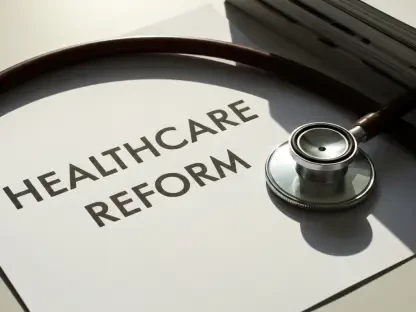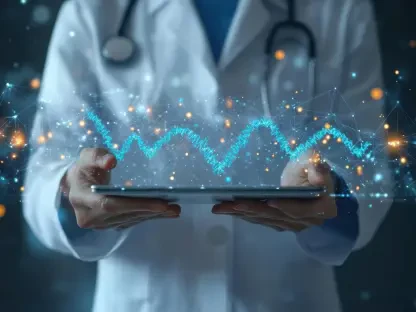The recent Supreme Court decision overruling Chevron deference has created a significant impact across numerous industries, including healthcare. This ruling has stripped some of the latitude and autonomy that federal agencies previously had to define, interpret, and enforce regulations. As a result, there is now a need to reassess what has been achieved thus far with big data in healthcare and to consider the future under this new regulatory framework.
The Current State of Big Data in Healthcare
The Promise and Reality of Big Data
The existing framework for healthcare AI regulation has always been convoluted, particularly when it involves utilizing advanced technologies, such as artificial intelligence (AI), to improve healthcare by analyzing extensive sets of healthcare data—referred to as “big data.” Despite the promise of improving health outcomes, reducing costs, and ensuring health equity, large-scale data collection and analysis over decades have not yielded significant improvements. The United States, despite being the most expensive health system globally, continues to lag behind in health outcomes when compared to other high-income nations.
This disconnect between investment and results underscores the complexities of integrating big data into healthcare. The vast amounts of data generated every day in the healthcare industry offer immense possibilities for predicting diseases, personalizing treatments, and advancing medical research. However, the challenge lies in effectively harnessing this data. Issues such as data silos, interoperability problems, privacy concerns, and a lack of standardization prevent the seamless flow of information that is critical for big data and AI to be genuinely transformative.
Systemic and Structural Barriers
Several systemic and structural barriers impede the transformation and change needed in healthcare. The U.S. healthcare system remains convoluted, particularly in how care is paid for and reimbursed, hit-and-miss access to care, and intrinsic obstacles in the interaction among providers, payers, and consumers. The technological advancements to date have not produced the sought-after ecosystem transformation necessary to enhance health outcomes, and the lack of a cohesive strategy to incorporate these advancements effectively is evident.
Moreover, the fragmentation of the healthcare system leads to a lack of coordinated care, which big data and AI could potentially address. Still, implementation barriers remain significant. Each stakeholder—whether hospitals, insurance companies, or government agencies—often operates in silos, making it challenging to collect and analyze data cohesively. Additionally, there are ethical and legal concerns around data ownership and patient privacy, further complicating these endeavors. Without addressing these foundational issues, the transformative potential of big data and AI in healthcare remains largely untapped.
Potential of Big Data and AI
Empowering Patients with AI Tools
AI and big data hold significant potential in the healthcare sector, but realizing this potential demands more than just technological progress. The promise lies in empowering patients with AI tools to make more evidence-based, informed choices. Furthermore, aligning incentives and generating patient care that is individualized, cost-effective, and equitable could yield better outcomes that match or exceed global standards.
In practical terms, AI tools can assist patients in understanding their conditions, exploring treatment options, and monitoring their health in real-time. For example, AI-driven applications can analyze patient data to provide personalized health recommendations, predict potential health issues before they become critical, and guide patients through their treatment journey. These tools not only make healthcare more accessible but also empower patients to take control of their health by providing them with the information they need to make informed decisions.
Driving Efficiency and Reducing Waste
The usage of big data has the potential to drive efficiency, reduce waste, and address inequalities in healthcare. Leveraging diverse data sources and integrating patient-reported outcomes—insights patients provide about the long-term benefits and harms of procedures or medical treatments—can become central to informed decision-making. These changes should aim to foster patient participation and trust in data sharing by delivering tangible benefits, such as personalized health insights, optimized care, and reduced unnecessary treatments.
By analyzing vast amounts of data, healthcare providers can identify patterns and trends that were previously hidden. This can lead to more accurate diagnoses, better treatment plans, and more efficient resource allocation. For instance, big data analytics can help hospitals predict patient admission rates, enabling better staff and resource management. It can also highlight areas where healthcare resources are being wasted, such as unnecessary tests or procedures, and provide actionable insights to reduce these inefficiencies. Consequently, the potential to drive down healthcare costs while improving care quality makes big data an invaluable tool for the future of healthcare.
Areas for Improvement
Transitioning to Personalized Care
Moving forward, the focus should be on transitioning from standardized to personalized care. This entails optimizing care for each patient, which would lead to reduced healthcare spending by avoiding unwarranted or ineffective procedures and treatments. The article argues for celebrating the promise of emerging technologies, like generative AI, to leverage big data for better healthcare delivery. Crucially, there needs to be a re-envisioning of the healthcare ecosystem to allow big data’s potential to flourish, which requires ongoing collaboration between technologists, clinicians, and policymakers.
Personalized care not only means tailoring treatments but also understanding the unique contexts of each patient’s life—social, environmental, and genetic factors that affect health outcomes. This approach can significantly improve patient satisfaction and health results by ensuring that each patient receives the most effective interventions. The shift to personalized care demands considerable investment in data analytics capabilities and fostering a culture where data-driven decision-making becomes the norm. Embracing this shift will be pivotal for driving the next wave of healthcare innovations.
Fostering Collaboration and Trust
Ensuring the patient is at the center of this transformation will be key to any lasting success. This involves fostering collaboration and trust among all healthcare stakeholders, including patients, providers, payers, and policymakers. By working together, these groups can create a more cohesive strategy to incorporate technological advancements effectively, ultimately leading to improved health outcomes and a more efficient healthcare system.
Building trust is particularly crucial in encouraging patients to share their data, which is the backbone of big data initiatives. Establishing transparent data use policies, ensuring stringent data protection measures, and actively demonstrating the benefits of data sharing are essential steps in fostering trust. Importantly, collaboration across healthcare sectors and with technology developers will ensure that AI and big data solutions are implemented in ways that genuinely meet patient needs and enhance healthcare delivery without compromising privacy or security.
Vision for the Future
Optimizing Care and Reducing Costs
Optimizing care for each patient and reducing healthcare costs are essential goals for the future of big data and AI in healthcare. By avoiding unwarranted or ineffective procedures and treatments, the healthcare system can become more efficient and cost-effective. This requires a comprehensive rethinking and restructuring of the healthcare ecosystem, facilitated by collaborative efforts across healthcare stakeholders.
Achieving this vision involves integrating various health data types—from clinical records to wearable device data and beyond—into cohesive databases that can be accessed and utilized across the system. The use of predictive analytics to anticipate patient needs, manage chronic diseases, and prevent hospital readmissions is another promising area. By focusing on preventative care and early interventions, healthcare providers can reduce the need for more costly treatments down the line, ultimately offering better care at lower costs.
Embracing Emerging Technologies
The recent Supreme Court decision overturning Chevron deference has significantly impacted a variety of industries, including healthcare. By revoking this precedent, the ruling has reduced the flexibility and independence that federal agencies once had in defining, interpreting, and enforcing regulations. The absence of Chevron deference means that courts will no longer automatically defer to agencies’ expertise when interpreting ambiguous statutes, effectively placing more power in the judiciary.
Consequently, stakeholders across the healthcare sector now face the challenge of navigating a new regulatory landscape. This includes reevaluating the progress that has been made with big data analytics in healthcare, as this advancement heavily depended on the regulatory interpretations and guidelines previously provided by federal agencies. The uncertainty brought about by this decision necessitates a strategic reassessment of the future path for healthcare innovation, compliance, and regulatory engagement. Understanding how to adapt to these changes will be crucial for continued growth and development in healthcare practices under the evolving legal framework.









